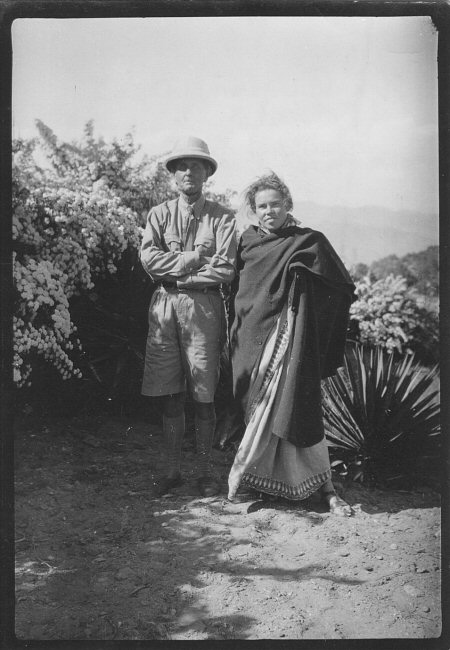|
The Celt in all ages of his long history, like the ancient
Greek thinkers with whom his ancestors were contemporary, has always been
inclined, unlike modern scientists, to seek an explanation for the phenomena of
evolutionary life by postulating a noumenal world of causes as the background to
a phenomenal world of effects. Today, the rapid march of scientific
pioneers, chiefly those in psychical research, is bringing our own cold and
exact science very close to that indefinable boundary which separates the two
worlds; and for that reason alone a presentation of the Celtic theory of the
causes operating to produce death and birth will be, at least by way of
suggestion, of some value.
Walter Evans-Wentz, The Fairy-Faith in Celtic Countries
(1911), page 493

American anthropologist, Walter Evans-Wentz, and English
Quaker nurse, Barbara Bruce, in India circa 1940.
 |
Walter Yeeling Evans-Wentz (1878-1965) was an anthropologist, writer,
Theosophist and Tibetan Buddhist. |
 |
He
was born in New Jersey, received B.A. and M.A. degrees from Stanford
University, studied Celtic mythology and folklore at Jesus College,
Oxford, and graduated from Oxford in 1910.
|
 |
From
1907-1909, he made a comprehensive study of the Celtic people's belief
in Fairies. |
 |
The
results of his study were published in 1911 under the title
The Fairy-Faith in Celtic Countries. |
 |
Subsequently, he traveled extensively in Mexico, Egypt, Ceylon (Sri
Lanka) and India. |
 |
In
1919, he arrived in Darjeeling, northern India where he became familiar
with the major Tibetan Buddhist religious texts. |
 |
Actual translation was performed by English speaking, Tibetan Buddhists,
primarily by the
Lama Kazi Dawa-Samdup (1868–1922). |
 |
Wentz
became a disciple of Lama Dawa-Samdup and a Buddhist practitioner. |
 |
In
1942, the Japanese invasion of Burma and eastern India compelled
Evans-Wentz to return to the United States. |
 |
He
lived in California for the last 23 years of his life, where he
supported local Buddhist and Theosophical organizations. |
|